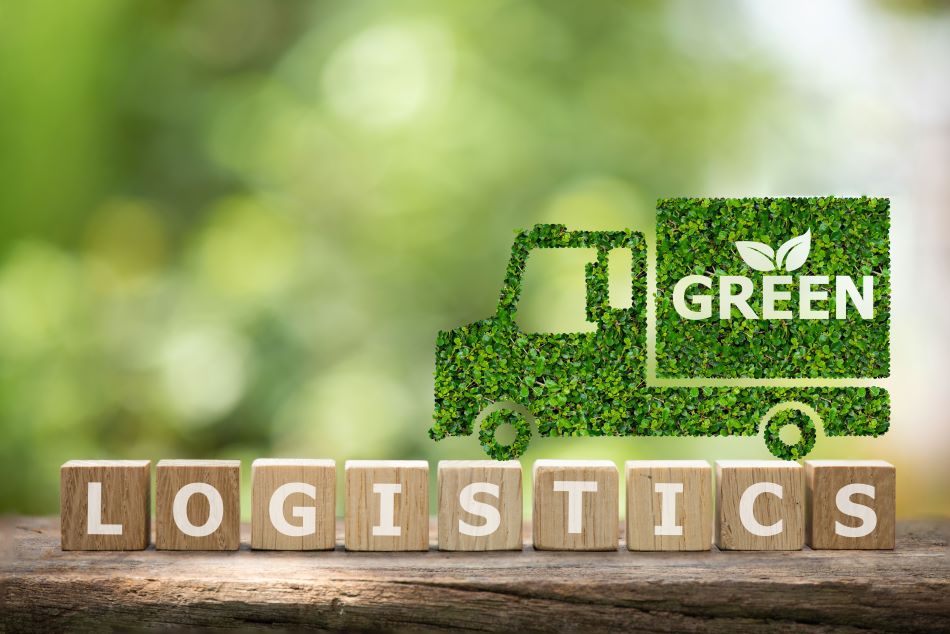Green logistics refers to following environmentally sustainable practices within transportation systems. This may include reducing carbon footprints, minimizing waste, and optimizing efficiency from production to delivery.
Retailers and e-commerce platforms are discovering that making logistics greener reduces cost leakages, protects margins against tightening regulations, and influences purchase decisions. An estimated 80-90% of a product’s emissions come from the supply chain (accounting for 60% of the global carbon emissions). A truck that travels around 120,000 miles in a year is believed to emit around 223 tons of CO2.
As the logistics industry plays a key role in global transportation, its efforts to reduce environmental impact would certainly matter a lot. The global green logistics market stood at $1,506.9 billion in 2024, and the retail and e-commerce end-use segment accounted for a 30.8% share of the global revenue. Let’s try to understand how following greener ways of doing business can be helpful for retailers and e-commerce platforms, as well as for the planet.
Why Green Logistics Matters for Retail and e-Commerce
- Cost control and risk reduction: Using resources more efficiently, reducing waste, and preparing for future cost increases helps companies lower variable and fixed costs. Green logistics is an investment that returns savings, often quite substantially. A study by EIT InnoEnergy (2024) found that logistics companies could save over €554 million annually by 2030 by using a mixed fleet of e-cargo bikes and e-vans (versus 100% e-van use) in urban last-mile delivery. This mix not only cuts emissions substantially but also delivers cost savings on fuel, maintenance, and urban vehicle costs.
According to an Amazon survey, 69% of Indian online shoppers prefer deliveries with minimal packaging. Amazon has increased orders shipped without extra delivery packaging by 83% since 2021. Less packaging means lower material cost, lower shipping weight (thus lower shipping cost), and less waste to manage.
- Customer preference and conversion: Sustainability claims also influence buying decisions, especially among younger customers. Packaging and delivery emissions are visible touchpoints that affect brand choice and repeat purchase. According to a consumer sustainability survey by Blue Yonder, 78% of consumers believe sustainability is a key consideration when selecting products or retailers.
Consumers are not only aware of sustainability but are often willing to pay (or switch brands) for greener options. Visible environmental impact in packaging, delivery methods, or transparency adds to brand appeal, loyalty, and sometimes higher price tolerance.
- Operational resilience: Green logistics investments often lead to systems that are more robust under disruption. These may include having flexible delivery modes (bike/e-cargo, EV), multiple small fulfillment centers or dark stores close to customers, reduced dependence on fossil fuels, and single routes.
Swiggy Instamart, for example, operates over 1000 dark stores in India using AI-based restocking systems. These stores reduce delivery times and shrink delivery distance and dependency on long hauls. Shorter, more local delivery routes are less impacted by fuel supply shocks and traffic congestion.
- Regulatory compliance and market access: Regulations mandate or penalize environmental externalities (emissions, waste, packaging). Retailers and e-tailers who fail to comply may face fines, restricted access to certain markets, inability to sell on certain platforms, or higher costs. Early compliance is a competitive advantage, while delayed compliance can bring both legal and brand risk.
Studies highlight inner-city bans on combustion engine vehicles (or scheduled upcoming low-emission zones) in EU cities. Companies using ICE (internal combustion engine) vehicles face regulatory access restrictions or fines, while those using electric or mixed fleets are better placed to absorb these changes.
The Bottom Line Green logistics is becoming the ground rule of modern retail and e-commerce. What started as a sustainability check-box has evolved into a profit lever. One that cuts fuel costs, stabilizes supply chains, protects market access, and strengthens brand trust. Retailers that once chased the fastest delivery are now racing for the cleanest mile as well.














